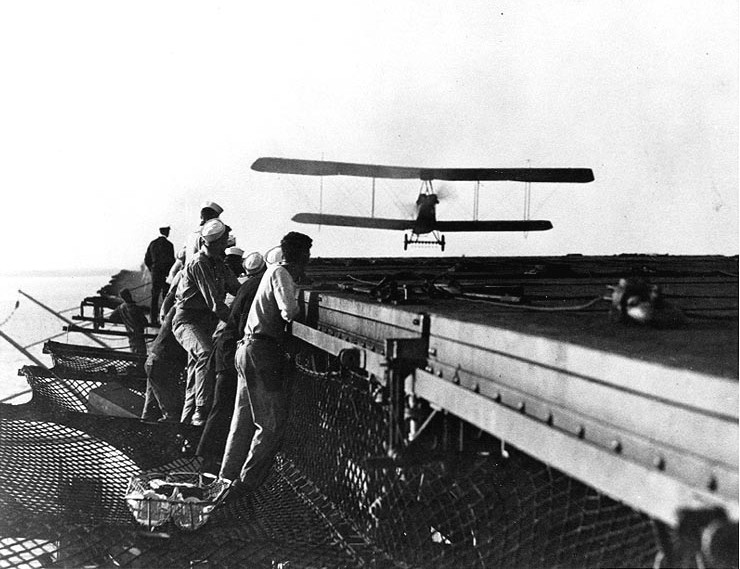The Museum will be closed January 12th - January 16th in preparation for our new Special Exhibition Ripley's Believe It or Not!. Museum reopens Saturday January 17th. New Exhibit opens January 31st!
On March 20th, 1922 The USS Jupiter was recommissioned as the USS Langley and became the United States Navy's first aircraft carrier. She was named after Samuel Langley who had attempted unsuccessfully to launch an aircraft from a houseboat in 1903. In honor of this milestone, March 20th, 2022 will be 100th anniversary of United States carrier aviation. The San Diego Air & Space Museum has many items in it's collection that relate to the Langley, and this exhibit takes a look these unique items.

The Langley in New York.
The USS Langley (CV-1) was converted in 1920 from the collier USS Jupiter (AC-3), and was also the Navy’s first turbo electrically propelled ship. The Jupiter had first been launched on August 14, 1912. The USS Langley was designated CV-1: Contrary to popular belief, the "CV" hull classification symbol does not stand for "carrier vessel". "CV" derives from the cruiser designation, with one popular theory that the V comes from the French word voler, "to fly", but this has never been definitively proven.

USS Jupiter in 1913.
On March 20th, 1922, the Langley was recommissioned and the era of the United States aircraft carrier had begun. The first commanding officer was Kenneth Whiting, who had originally come up with the idea of converting an collier to a aircraft carrier 3 years earlier.

The conversion from a collier to an aircraft carrier, Norfolk, 1921.
On October 17, 1922, Lieutenant Virgil C. Griffin piloted the first plane—a Vought VE-7 from the Langley. This was the first time an aircraft took off from a US aircraft carrier, and Griffin would be the forerunner for thousands of brave men who would follow in his footsteps. A few days later, on October 26 1922, Godfrey de Courcelles Chevalier made the first landing on Langley's deck, flying Aeromarine 39B No. 606.

The first landing on the Langley.
Most of her time as a carrier was spent training fleet units, training pilots, and participating in tactical-fleet problems (war games) in San Diego, anchored at North Island. And altough she never saw combat as a carrier, the lessons learned on the Langley would prove invaluable for the pilots that flew off the carriers that followed her.

The USS Langley at North Island in 1933.
As larger, more modern aircraft carriers were built, the USS Langley was converted to a sea plane tender on February 26th, 1937 and redesignated as AV-3. In the opening months of World War Two, the Langley was attack by Japanese bombers on February 27, 1942. The damage was very significant, and the order was given to scuttle her to keep the Langley from falling into enemy hands.

The Langley is brought to the bottom by US torpedoes after receiving substantial damage from Japanese bombers.
Because of the Langley's strong connection to San Diego, the San Diego Air & Space Museum has aquired several items in our collection that relate to her, many of which can be viewed in this exhibit.
2001 Pan American Plaza, San Diego, CA
Phone: 619.234.8291
Información En Español
Contact Us
We would like to thank all our sponsors who help us make a difference. Click here to view all who help us.

The San Diego Air & Space Museum is a 501(c)(3) non-profit organization. Federal Tax ID Number 95-2253027.
